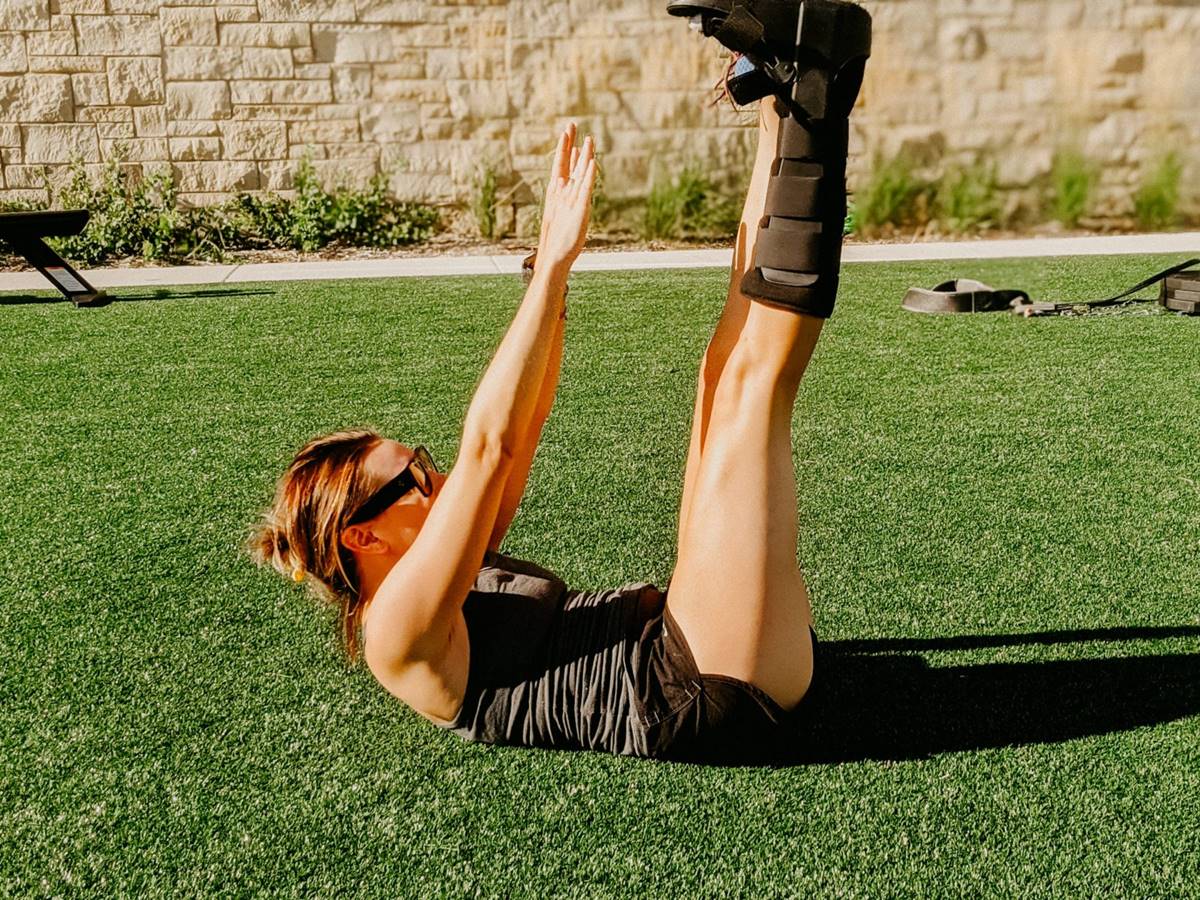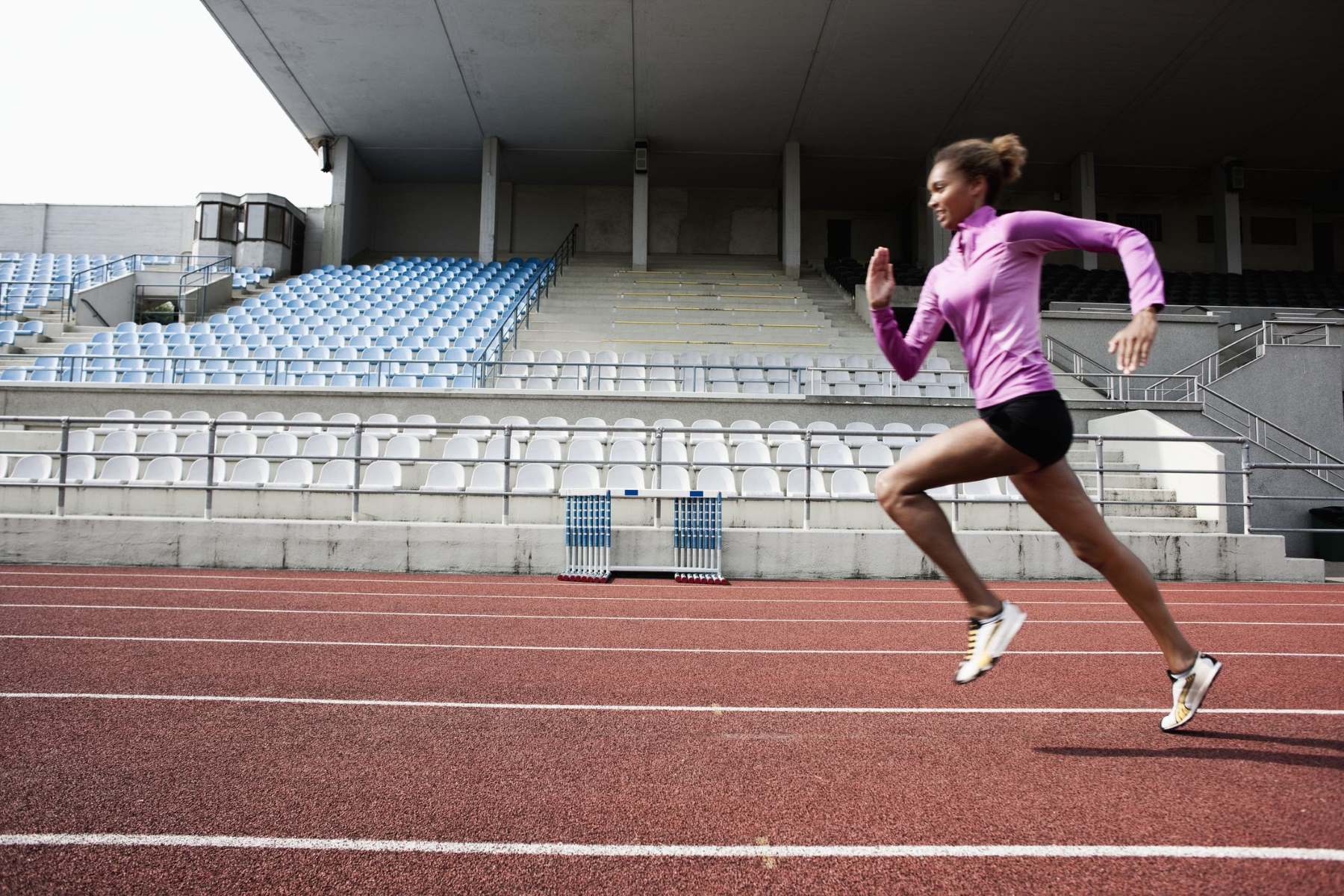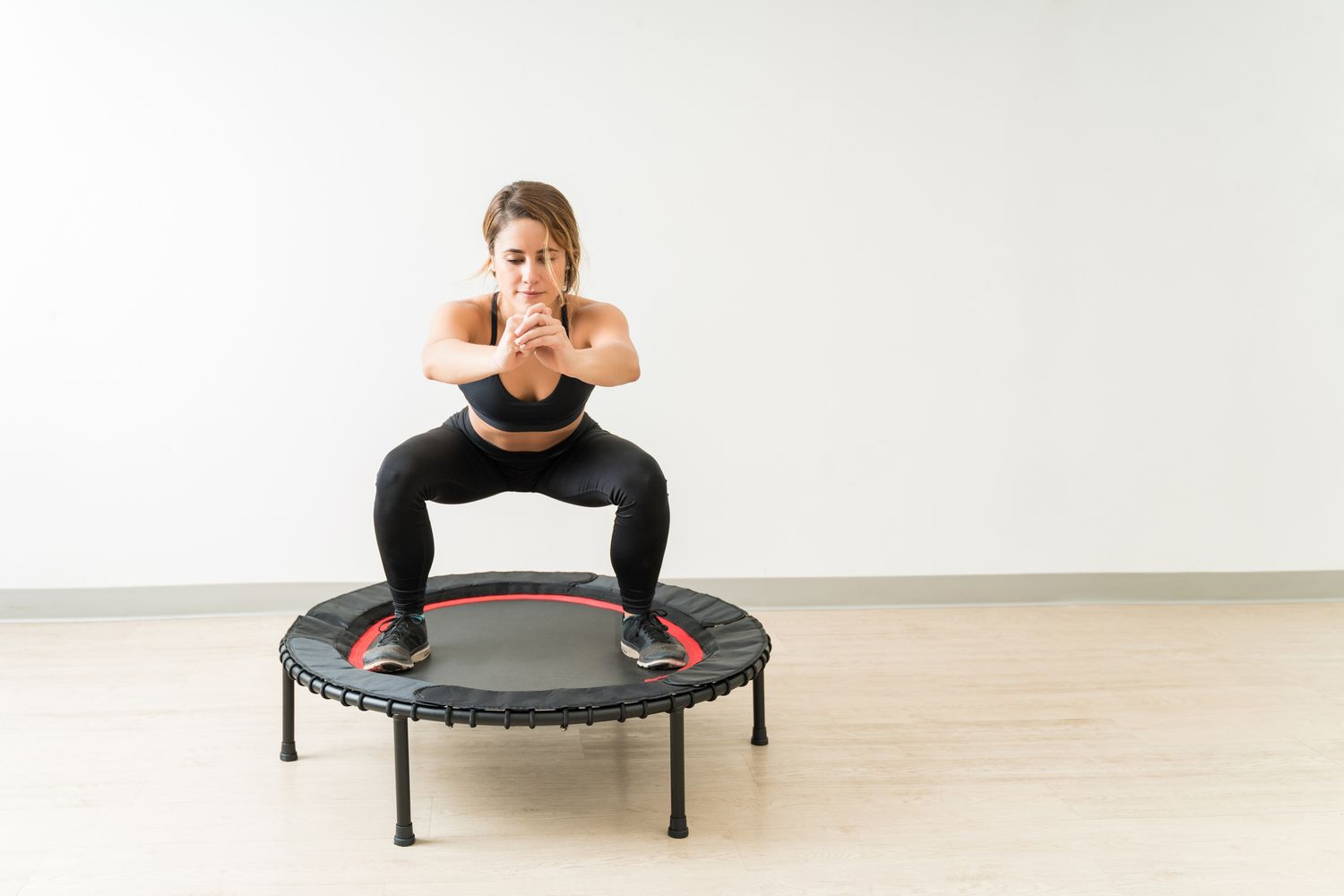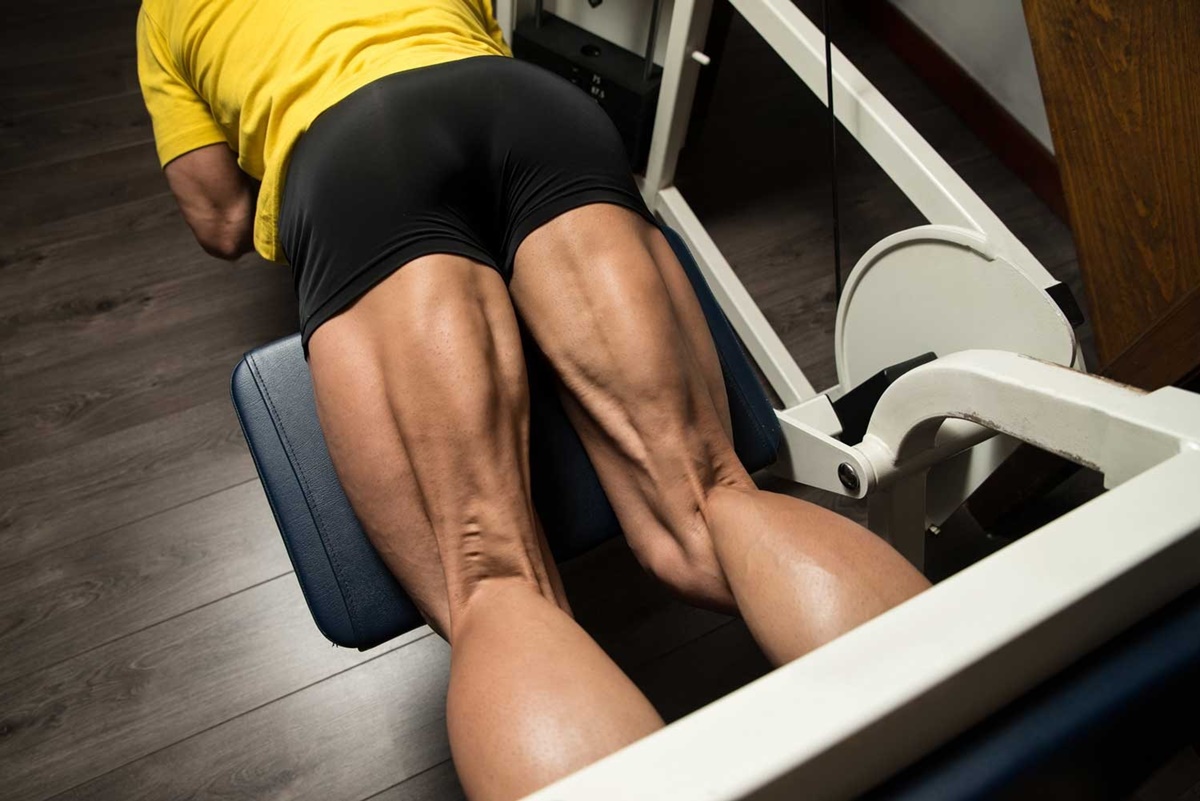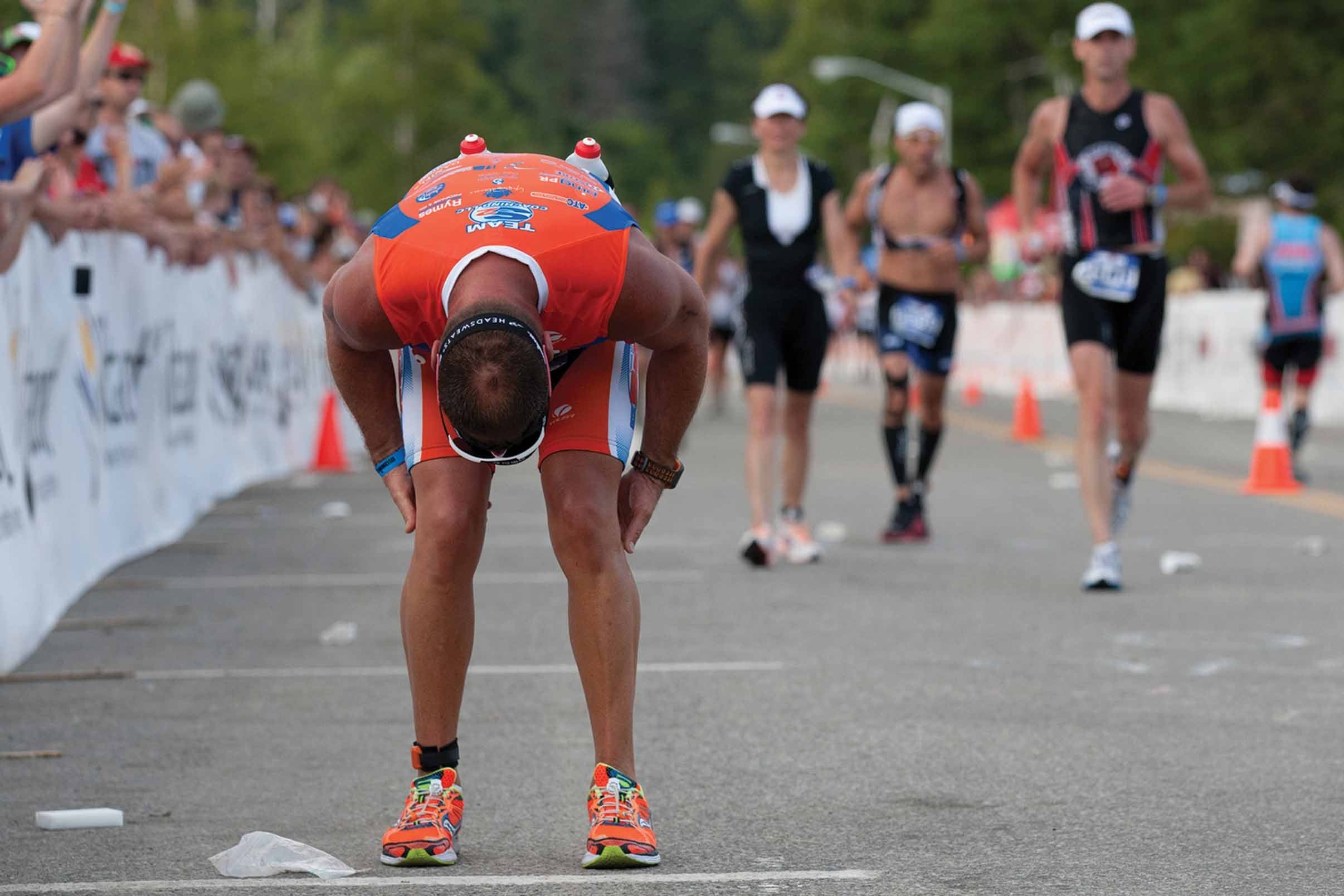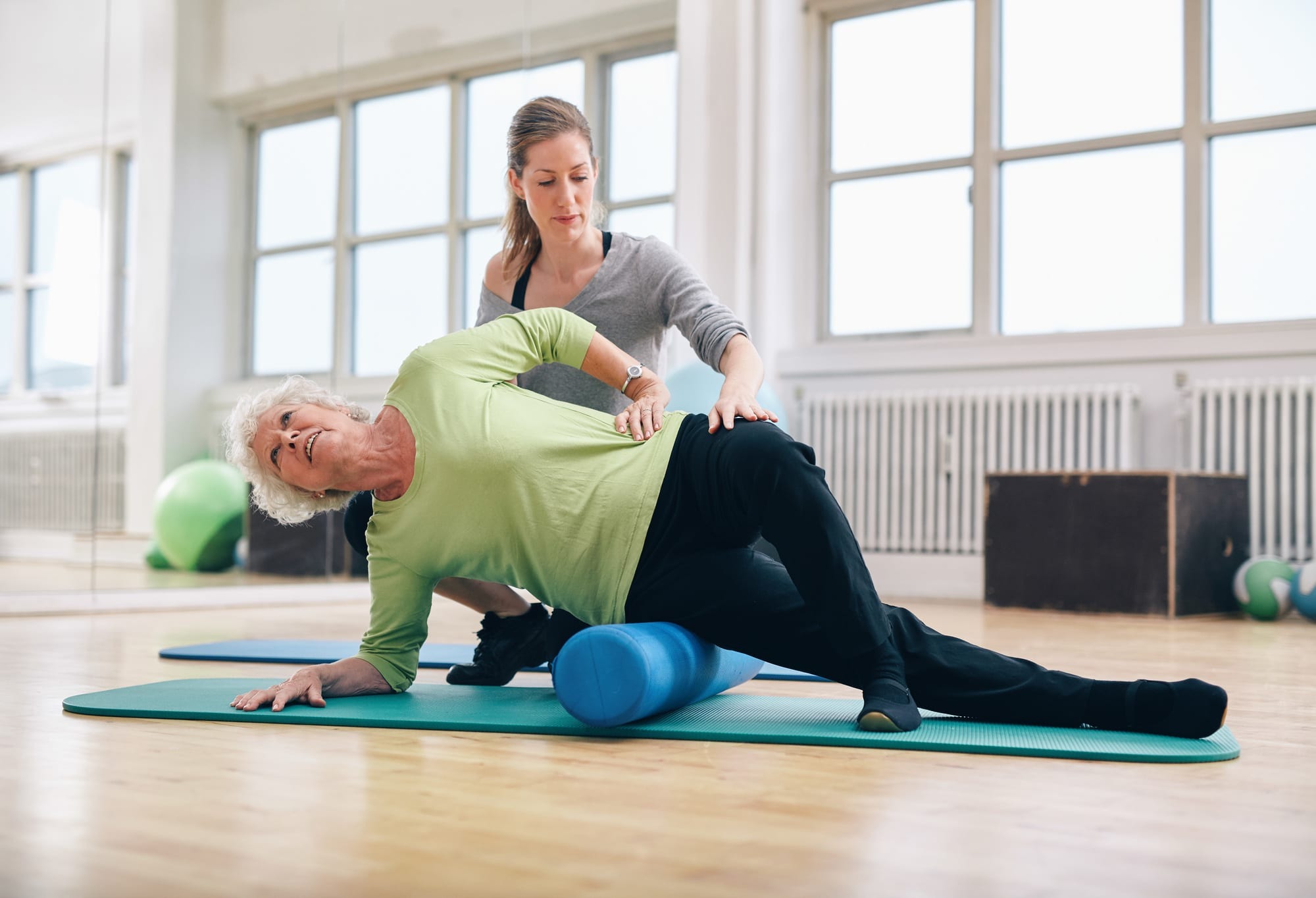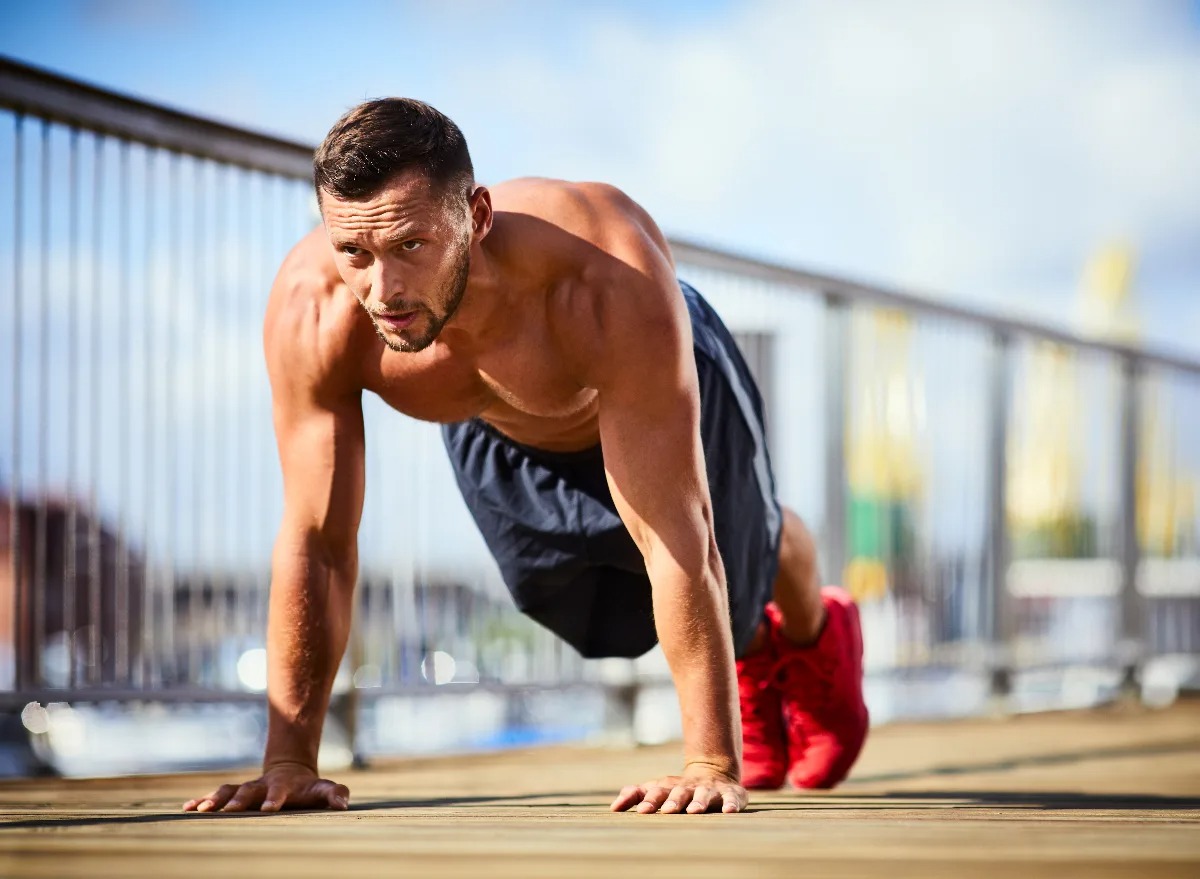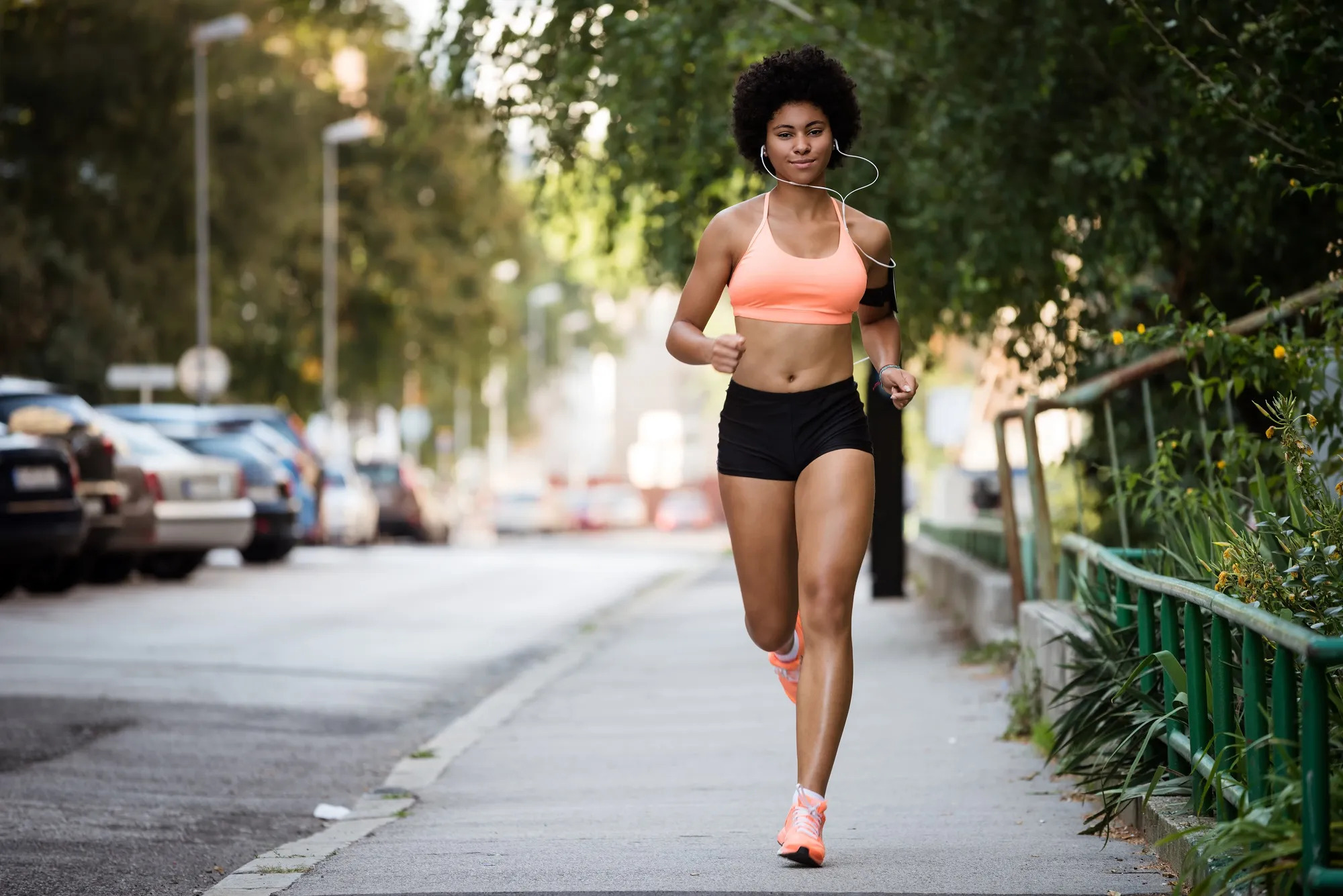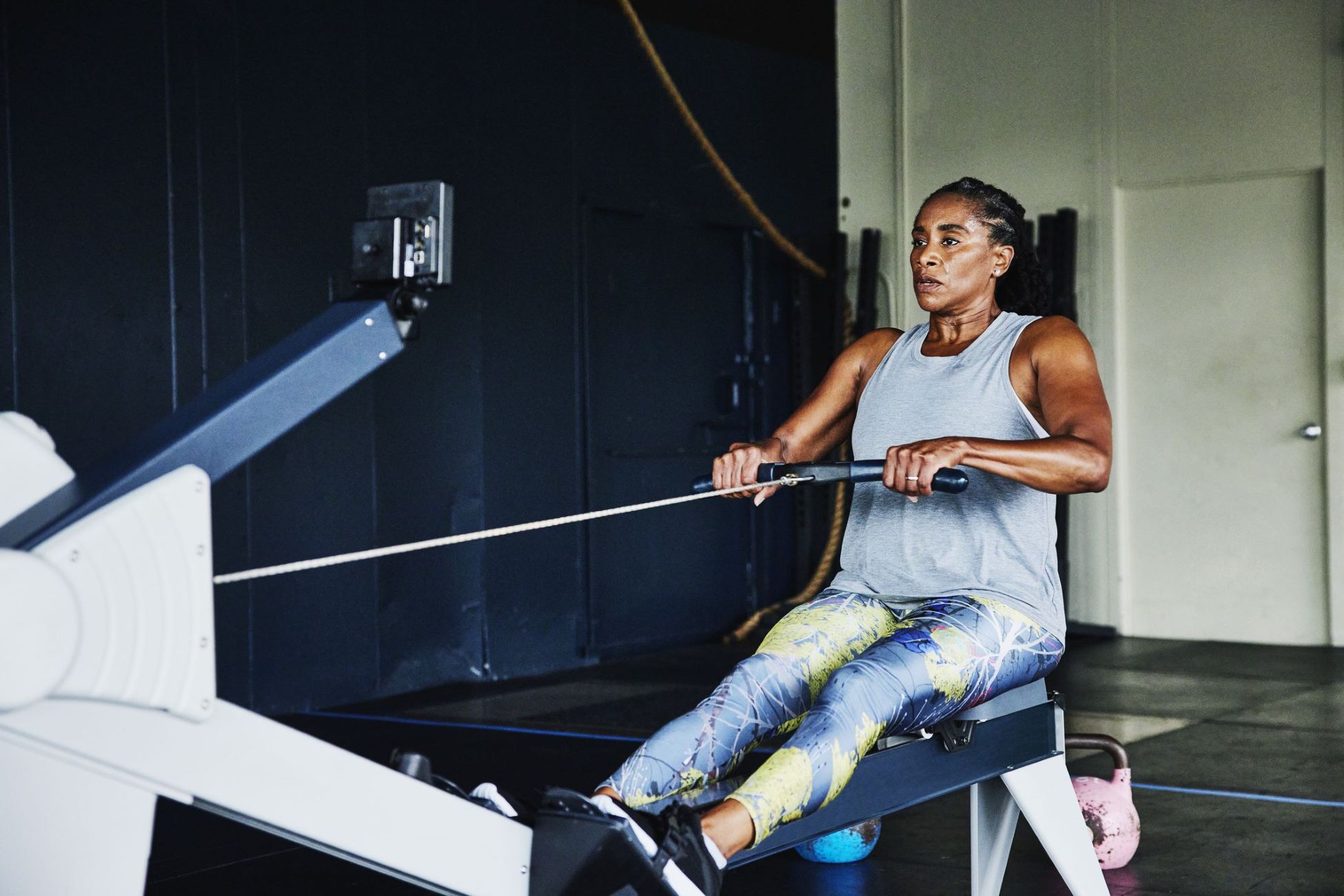Home>Misc>Featured>Which Of The Following Is A Leg Exercise?


Featured
Which Of The Following Is A Leg Exercise?
Modified: August 19, 2023
Discover the best leg exercises to boost your fitness routine. With a wide variety of options, find out which exercises are featured for toned and sculpted legs.
Introduction
When it comes to building strong and toned legs, incorporating leg exercises into your fitness routine is crucial. Leg exercises not only help in improving lower body strength but also contribute to overall balance, stability, and functionality. Whether you aim to enhance your athletic performance, increase muscle mass, or simply tone your legs, engaging in leg exercises is the way to go.
In this article, we will explore a variety of leg exercises that target different muscle groups in the legs. From compound movements that engage multiple muscles simultaneously to isolation exercises that target specific areas, there are numerous exercises to choose from based on your fitness goals and preferences.
By including leg exercises in your workout routine, you can reap a host of benefits. Strengthening the leg muscles can help improve posture, alleviate lower back pain, enhance athletic performance in activities such as running and jumping, and increase overall muscle tone. Additionally, leg exercises often involve large muscle groups, meaning they can contribute to burning calories and promoting weight loss.
It’s important to note that before starting any new exercise routine, you should consult with a qualified fitness professional or your healthcare provider, especially if you have any underlying health conditions or injuries. They can guide you on how to perform the exercises correctly and provide modifications or alternatives if needed.
Now, let’s delve into some of the most effective leg exercises that can help you achieve strong and shapely legs.
Squats
Squats are often hailed as the king of leg exercises, and for good reason. They target multiple muscle groups, including the quadriceps, hamstrings, glutes, and calves. Squats can be performed using just your body weight or with added resistance such as dumbbells or a barbell.
To perform a squat, stand with your feet shoulder-width apart and toes slightly turned out. Lower your body by bending at the hips and knees, keeping your back straight and chest lifted. Aim to lower until your thighs are parallel to the ground or slightly below, then push through your heels to return to the starting position.
Benefits of squats include improved lower body strength, increased muscle mass, enhanced core stability, and improved overall balance and mobility. They also have functional benefits as they mimic movements performed in daily activities and sports.
Variations of squats include goblet squats, sumo squats, Bulgarian split squats, and pistol squats. These variations target slightly different muscle groups and can help add variety to your workout routine.
Remember to maintain proper form throughout the movement, keeping your knees in line with your toes and not allowing them to cave in. Engage your core muscles to support your spine and avoid rounding your back.
If you’re a beginner, start with bodyweight squats and focus on mastering the proper form before progressing to weighted squats. As you become more comfortable, gradually increase the resistance to continue challenging your muscles.
Incorporating squats into your leg workout routine can yield significant results in terms of strength, muscle tone, and overall lower body development. Aim to perform squats at least twice a week for optimal results.
Lunges
Lunges are another fantastic leg exercise that targets the quadriceps, hamstrings, glutes, and calves. They also engage the core muscles for added stability and balance. Lunges can be performed with or without added resistance and offer various variations to target different muscle groups.
To perform a basic lunge, start by standing tall with your feet hip-width apart. Take a step forward with your right foot and lower your body by bending both knees to about a 90-degree angle. Make sure your front knee is directly above your ankle and your back knee hovers just above the ground. Push through your front heel to bring your body back to a standing position, then repeat on the other leg.
Lunges can be performed in a forward or reverse direction, and the width of your stance can also be adjusted to target different areas of the legs. Side lunges, walking lunges, and curtsy lunges are all variations that add variety to your leg workout routine.
In addition to increasing lower body strength and muscle tone, lunges also promote better balance, stability, and functional movement patterns. They can be particularly beneficial for runners and athletes as they replicate the lunging movement involved in sprinting and changing direction.
When performing lunges, it’s important to maintain proper form by keeping your upper body upright, shoulders back, and torso engaged. Avoid allowing your knees to extend past your toes or collapsing inward. If balance is an issue, you can place your hands on your hips or hold onto a stable surface for support.
Adding lunges to your leg workout routine can help improve lower body strength, enhance muscle definition, and boost overall functional fitness. Aim to perform lunges at least two to three times a week, gradually increasing the difficulty and resistance as your strength improves.
Deadlifts
Deadlifts are a compound exercise that primarily targets the hamstrings, glutes, and lower back, making them an excellent exercise for overall lower body and posterior chain development. With proper form and technique, deadlifts can also engage the quadriceps, calves, and core muscles.
To perform a conventional deadlift, start by standing with your feet hip-width apart and the barbell on the floor in front of you. Bend at the hips and knees, maintaining a neutral spine, and grip the bar just outside your legs. Keeping your chest lifted and core engaged, push through your heels and lift the barbell while extending your hips and knees. Stand tall with your shoulders back, then slowly lower the barbell back down to the ground.
It’s important to note that deadlifts require proper form and technique to avoid injury. Beginners should start with lighter weights and focus on mastering the movement before progressing to heavier loads. It’s also recommended to seek guidance from a qualified fitness professional to ensure correct execution.
Deadlifts offer numerous benefits, including increased lower body and posterior chain strength, improved grip strength, enhanced overall body stability, and increased muscle mass. They also provide functional benefits as they mimic movements like picking up heavy objects from the ground.
There are variations of deadlifts that target different muscle groups or place a greater emphasis on specific areas such as the quadriceps or glutes. Some popular variations include sumo deadlifts, Romanian deadlifts, single-leg deadlifts, and trap bar deadlifts.
Incorporating deadlifts into your leg workout routine can lead to improved strength, muscle development, and functional fitness. Start with lighter weights and focus on proper form, gradually increasing the load as your technique improves. Aim to include deadlifts in your routine once or twice a week for optimal results.
Leg Press
The leg press is a popular resistance exercise that targets the quadriceps, hamstrings, and glutes. It is performed using a leg press machine, where you sit with your back against a padded backrest and push against a platform with your feet.
To perform a leg press, adjust the seat and platform so that your knees are at a 90-degree angle when your feet are placed on the platform. Push through your heels to extend your knees and hips, straightening your legs. Slowly lower the platform back down to the starting position, allowing your knees to bend again.
The leg press machine provides a controlled environment for targeting the leg muscles, making it a great option for those unable to perform free weight exercises or looking to isolate specific muscle groups. It allows you to adjust the weight load to match your fitness level and goals.
Benefits of the leg press include increased lower body strength and muscle mass, improved explosive power, and enhanced quad and hamstring development. It is also a useful exercise for individuals recovering from knee or lower back injuries, as it reduces the impact on these areas compared to exercises like squats or lunges.
While the leg press primarily targets the quads and hamstrings, foot placement variations can alter the emphasis on specific muscle groups. Placing your feet high and wide on the platform targets the glutes and hamstrings, while placing your feet lower and closer together targets the quadriceps.
It’s important to maintain proper form throughout the exercise, keeping your back against the backrest and avoiding excessive bending of the lower back. Use a weight that challenges your muscles without compromising your form and aim for controlled and smooth movements.
Incorporating the leg press into your leg workout routine can help you achieve well-rounded lower body strength and muscle development. Aim to perform the leg press exercise two to three times a week, gradually increasing the weight load as your strength improves.
Step-ups
Step-ups are a versatile leg exercise that targets the quadriceps, hamstrings, glutes, and calves. This exercise mimics the movement of climbing stairs and can be performed using a step bench, a set of stairs, or even a sturdy box.
To perform a step-up, stand in front of the step or platform with your feet hip-width apart. Step onto the platform with your right foot, pressing through your heel to lift your body up. Bring your left foot up onto the platform, then step back down with your right foot followed by your left foot.
You can start with bodyweight step-ups and gradually increase the intensity by holding dumbbells or wearing a weighted vest. You can also vary the height of the step or platform to target different muscle groups or increase the level of difficulty.
One of the main benefits of step-ups is that they can help improve balance, stability, and coordination, as they require single-leg strength and control. They also engage the core muscles, providing additional stability and helping to improve overall strength and functional movement patterns.
Step-ups are a fantastic exercise for individuals recovering from knee or ankle injuries, as they allow you to control and modify the range of motion based on your comfort level. However, it’s always important to listen to your body and consult with a healthcare professional if you have specific concerns or limitations.
By incorporating step-ups into your leg workout routine, you can achieve stronger and more toned legs while improving your overall stability and balance. Aim to perform step-ups two to three times a week, gradually increasing the difficulty and weight load as you progress.
Calf Raises
Calf raises are a simple yet effective exercise that specifically targets the calves, the muscles located on the back of your lower legs. Strong calves not only contribute to the aesthetics of your legs but also play a crucial role in overall lower body strength and stability.
To perform calf raises, start by standing on a flat surface with your feet hip-width apart. Slowly raise your heels off the ground by pushing through the balls of your feet, lifting your body weight onto your toes. Hold the position for a brief moment, then lower your heels back down to the ground.
To increase the intensity, you can perform calf raises on a step or an elevated surface, allowing your heels to drop below the level of your toes before lifting them up. This provides a greater stretch to the calf muscles and enhances the effectiveness of the exercise.
In addition to targeting the calf muscles, calf raises also engage the muscles of the feet and ankles, promoting both strength and mobility in these areas. They can help improve balance, stability, and control, especially in activities that require jumping or quick changes in direction.
It’s important to maintain proper form throughout calf raises by keeping your core engaged, shoulders relaxed, and feet parallel. Avoid using momentum to lift your heels and focus on controlled and slow movements to fully engage the calf muscles.
For added resistance, you can hold dumbbells in your hands or use a calf raise machine at the gym. Alternatively, you can perform single-leg calf raises to challenge each calf individually and work on any imbalances.
Incorporating calf raises into your leg workout routine can help develop strong, defined calves and contribute to overall lower body strength and stability. Aim to perform calf raises at least two to three times a week, gradually increasing the number of repetitions or weight load as you progress.
Leg Extensions
Leg extensions are an isolation exercise that primarily targets the quadriceps, the muscles located on the front of your thighs. This exercise involves extending your legs against resistance, making it an excellent choice for directly targeting and strengthening the quads.
To perform leg extensions, sit on a leg extension machine with your back against the backrest and your legs positioned under the padded bar. Start with your knees bent at a 90-degree angle and slowly extend your legs until they are straight. Hold the position for a brief moment, then return to the starting position, keeping the weight under control.
Leg extensions can be performed using a variety of machines that offer different adjustments and resistance settings. You can adjust the seat height, foot pad position, and weight load to suit your comfort and fitness level.
This exercise specifically isolates the quadriceps, allowing you to target and strengthen this muscle group without engaging other lower body muscles to a significant extent. It can help improve quadriceps strength, muscle definition, and knee stability.
However, it’s important to note that leg extensions put a significant amount of stress on the knee joint. Individuals with knee problems or injuries should approach this exercise with caution and consult a healthcare professional or qualified trainer before adding it to their routine.
For those without knee issues, incorporating leg extensions into a leg workout routine can be an effective way to develop strong and defined quadriceps. Aim to perform leg extensions two to three times a week, gradually increasing the weight load but always focusing on maintaining proper form and avoiding excessive strain on the knees.
In addition to using machine-based leg extensions, you can also perform bodyweight or resistance band leg extensions. These variations allow for greater stability and control, and can be done almost anywhere with minimal equipment requirements.
Hamstring Curls
Hamstring curls are an effective exercise for targeting the hamstring muscles, which are located at the back of your thighs. This exercise helps to strengthen and tone the hamstrings, improving overall lower body strength and stability.
There are various ways to perform hamstring curls, depending on the equipment available. One common method is to use a machine specifically designed for hamstring curls. Start by lying facedown on the machine with your ankles positioned under the padded lever. Slowly bend your knees, bringing your heels towards your glutes, and contract your hamstrings before returning to the starting position.
If you don’t have access to a machine, you can also perform hamstring curls using a stability ball or resistance bands. Lie faceup with your feet resting on top of the ball or loop the band around your ankles. Lift your hips off the ground and flex your knees, bringing your heels towards your glutes, then slowly return to the starting position.
Hamstring curls are important for balancing out the strength of the hamstring muscles in proportion to the quadriceps. Strong hamstrings can help improve athletic performance, prevent injuries, and promote better overall lower body strength.
Incorporating hamstring curls into your leg workout routine is beneficial for targeting and strengthening the hamstrings. Aim to perform hamstring curls at least two to three times a week, gradually increasing the resistance or number of repetitions as your strength improves.
It’s crucial to perform hamstring curls with proper form to maximize the effectiveness of the exercise and prevent injury. Focus on maintaining a neutral spine, engaging your core, and using controlled movements, both during the upward and downward phases of the exercise.
Remember to always listen to your body and consult with a qualified fitness professional if you have any concerns or existing hamstring injuries. They can help guide you on proper form and provide modifications or alternative exercises if needed.
Conclusion
Incorporating leg exercises into your fitness routine is essential for building strong, toned, and functional legs. The leg exercises discussed in this article, including squats, lunges, deadlifts, leg press, step-ups, calf raises, leg extensions, and hamstring curls, target various muscle groups in the legs and offer a wide range of benefits.
Squats are a compound exercise that engages multiple muscle groups, including the quadriceps, hamstrings, glutes, and calves. They improve lower body strength, muscle mass, balance, and overall functionality.
Lunges and step-ups are great exercises for targeting the quadriceps, hamstrings, and glutes. They help improve lower body strength, balance, stability, and coordination. Lunges also simulate movements used in sports and everyday activities.
Deadlifts target the hamstrings, glutes, and lower back, and are excellent for overall lower body and posterior chain development. They enhance strength, muscle definition, and functional fitness.
The leg press is an effective way to isolate and strengthen the quadriceps, hamstrings, and glutes. It provides a controlled environment and is beneficial for individuals recovering from knee or lower back injuries.
Calf raises isolate the calf muscles and help improve lower leg strength, stability, and balance. They contribute to enhancing the aesthetics of the legs and can be done with or without added resistance.
Leg extensions target the quadriceps and are useful for isolation and strengthening of this muscle group. However, caution should be exercised, especially for those with knee problems or injuries.
Hamstring curls specifically target and strengthen the hamstring muscles. They improve lower body strength, stability, and prevent muscle imbalances.
Remember to consult with a qualified fitness professional or healthcare provider before starting any new exercise routine, especially if you have underlying health conditions or injuries. They can guide you on proper form, provide modifications if necessary, and help you design a leg workout routine that suits your goals and abilities.
By incorporating a combination of these leg exercises into your fitness routine, you can achieve stronger, more toned, and functional legs. Whether your aim is to increase muscle mass, improve athletic performance, or simply enhance the appearance of your legs, a well-rounded leg workout routine can help you reach your goals.
